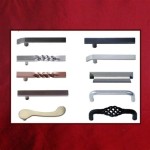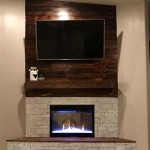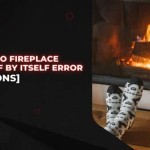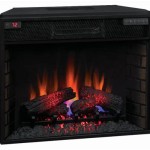Adding A Wood Burning Fireplace To Your Home
The allure of a crackling fire, the warmth it radiates, and the ambiance it creates are timeless reasons why many homeowners consider adding a wood-burning fireplace to their residences. This project, however, requires careful planning and execution to ensure safety, efficiency, and adherence to local building codes. A wood-burning fireplace is not simply a decorative feature; it integrates into the home's structure and affects its heating dynamics, air quality, and overall value. This article outlines the key considerations and steps involved in adding a wood-burning fireplace to a home.
Before any construction begins, a thorough assessment of the home's existing structure and the proposed location for the fireplace is necessary. This assessment should consider several factors, including the structural integrity of the walls and floors, the presence of existing utilities (electrical wiring, plumbing, gas lines), and the proximity to combustible materials. A professional structural engineer can provide valuable insights regarding any modifications needed to support the weight of the fireplace and chimney system.
The type of wood-burning fireplace also needs careful consideration. Options include traditional masonry fireplaces, prefabricated metal fireplaces (also known as zero-clearance fireplaces), and wood-burning stoves with flue systems. Masonry fireplaces are constructed from brick or stone and offer a classic aesthetic, but they are also the most expensive and require significant structural support. Zero-clearance fireplaces are lighter and easier to install, as they are designed to be installed closer to combustible materials. Wood-burning stoves offer efficient heating and can be installed in a variety of locations, but they require a separate flue system and may not offer the same aesthetic appeal as a traditional fireplace.
Understanding Building Codes and Regulations
Local building codes and regulations play a crucial role in the installation of a wood-burning fireplace. These codes are designed to ensure the safety of the occupants and the surrounding environment. They typically address issues such as chimney height and placement, firebox dimensions, clearances to combustible materials, and air supply requirements. Failure to comply with these codes can result in fines, delays, and even the removal of the fireplace. It is imperative to consult with the local building department and obtain the necessary permits before starting any construction work. A qualified professional familiar with local codes can navigate this process effectively.
Furthermore, environmental regulations may restrict the types of wood that can be burned in certain areas. Some regions have restrictions on burning softwoods or treated wood, as they can release harmful pollutants into the air. It is essential to understand and comply with these regulations to minimize the environmental impact of the fireplace and avoid potential penalties.
Insurance companies also have specific requirements related to wood-burning fireplaces. They may require inspections and certifications to ensure that the fireplace is installed and maintained according to safety standards. Failure to meet these requirements could invalidate the homeowner's insurance policy in the event of a fire. Contact the insurance provider to understand their specific requirements before installing a wood-burning fireplace.
Selecting the right professional for the job is paramount. A qualified and experienced contractor can ensure that the fireplace is installed correctly, safely, and in compliance with all applicable codes and regulations. Look for contractors who are licensed, insured, and have a proven track record of successful fireplace installations. Request references and review their past work to assess their quality and reliability. A detailed contract should outline the scope of work, the materials to be used, the timeline for completion, and the payment schedule.
The installation process typically involves several stages, including site preparation, chimney construction or installation, fireplace installation, and finishing work. Site preparation may involve demolition of existing walls or floors, reinforcing the structure, and running electrical wiring or gas lines. Chimney construction is a critical aspect of the installation, as it ensures proper venting of smoke and flue gases. The chimney must be properly sized and insulated to prevent creosote buildup and reduce the risk of chimney fires. Fireplace installation involves setting the firebox, connecting the flue system, and installing any necessary accessories, such as a damper or blower.
Selecting The Right Fireplace Design and Materials
The design and materials used for the fireplace should complement the overall aesthetic of the home. A wide range of materials are available, including brick, stone, tile, and metal. The choice of materials will depend on the homeowner's preferences, the architectural style of the home, and the budget. Consider the color, texture, and pattern of the materials to create a fireplace that is both functional and visually appealing.
The size of the firebox should be appropriate for the size of the room. A firebox that is too large can overheat the room, while a firebox that is too small may not provide sufficient heat. The shape of the firebox can also affect its heating efficiency. A deeper firebox will radiate more heat into the room, while a shallower firebox will provide a more focused heat source.
The fireplace surround, which is the area around the firebox, provides an opportunity to add decorative elements and enhance the overall design of the fireplace. The surround can be made from a variety of materials, including wood, stone, tile, or metal. Consider adding a mantel to provide a place for displaying decorative items. A hearth, which is the area in front of the firebox, should be made from a non-combustible material, such as brick or stone, to protect the flooring from sparks and embers.
Proper ventilation is essential for ensuring the safe and efficient operation of a wood-burning fireplace. The fireplace needs an adequate supply of air to support combustion. This air can be supplied through a dedicated air duct or through existing openings in the room. Insufficient air supply can lead to incomplete combustion, resulting in smoke and carbon monoxide buildup in the home. A tight-fitting door on the firebox can help to control the airflow and prevent drafts.
The chimney is a critical component of the fireplace system, as it is responsible for venting smoke and flue gases out of the home. The chimney must be properly sized and insulated to ensure adequate draft and prevent creosote buildup. Creosote is a highly flammable substance that can accumulate in the chimney and cause chimney fires. Regular chimney inspections and cleaning are essential for preventing chimney fires and maintaining the safety of the fireplace.
Understanding Ongoing Maintenance and Safety
Once the wood-burning fireplace is installed, ongoing maintenance is essential for ensuring its safe and efficient operation. Regular chimney inspections and cleaning are critical for preventing chimney fires and maintaining adequate draft. A qualified chimney sweep can inspect the chimney for cracks, blockages, and creosote buildup, and can clean the chimney to remove any accumulated debris. The frequency of chimney cleaning will depend on the frequency of fireplace use and the type of wood burned.
Proper wood storage is also important for maintaining the efficiency of the fireplace. Wood should be stored in a dry, well-ventilated area to prevent rot and insect infestation. Seasoned wood, which has been allowed to dry for at least six months, burns more efficiently and produces less smoke than green wood. Store wood away from the house to minimize the risk of pest infestations.
Carbon monoxide detectors are essential safety devices for any home with a wood-burning fireplace. Carbon monoxide is a colorless, odorless gas that can be produced by incomplete combustion. Exposure to carbon monoxide can cause serious health problems, including death. Install carbon monoxide detectors on every level of the home, and test them regularly to ensure they are functioning properly. Replace the batteries in the detectors at least once a year.
Fire extinguishers should be readily accessible in the event of a fire. Choose a fire extinguisher that is rated for Class A fires, which are fires involving ordinary combustibles such as wood and paper. Ensure that all members of the household know how to use the fire extinguisher. Consider having multiple fire extinguishers strategically located throughout the home.
Adding a wood-burning fireplace to a home is a complex project that requires careful planning, execution, and ongoing maintenance. By understanding the key considerations and steps involved, homeowners can ensure that their wood-burning fireplace is safe, efficient, and a valuable addition to their home. Consulting with qualified professionals, such as structural engineers, contractors, and chimney sweeps, is essential for ensuring the success of the project.
Furthermore, it is crucial to obtain all necessary permits and comply with local building codes and regulations. These codes are designed to protect the safety of the occupants and the surrounding environment. Failure to comply with these codes can result in fines, delays, and even the removal of the fireplace.

Your Home Doesn T Have A Fireplace And You Want To Add One

Does A Fireplace Add Value To House Vertical Chimney Care

How To Heat Your House With Just A Wood Burning Stove Chesneys

4 Things Every Homeowner Should Know Before Installing A Fireplace

Your Guide To Wood Stove Installation Full Service Chimney

New Wood Burning Prefab Fireplaces Complete Fireplace Installs

Should I Use A Fireplace Insert Or Wood Stove To Heat Up My Home

How Does A Fireplace Add To The Value Of Your Home

Your Guide To Wood Stove Installation Full Service Chimney

Does A Wood Burning Stove Add Value To Your Home Property Advice
Related Posts








